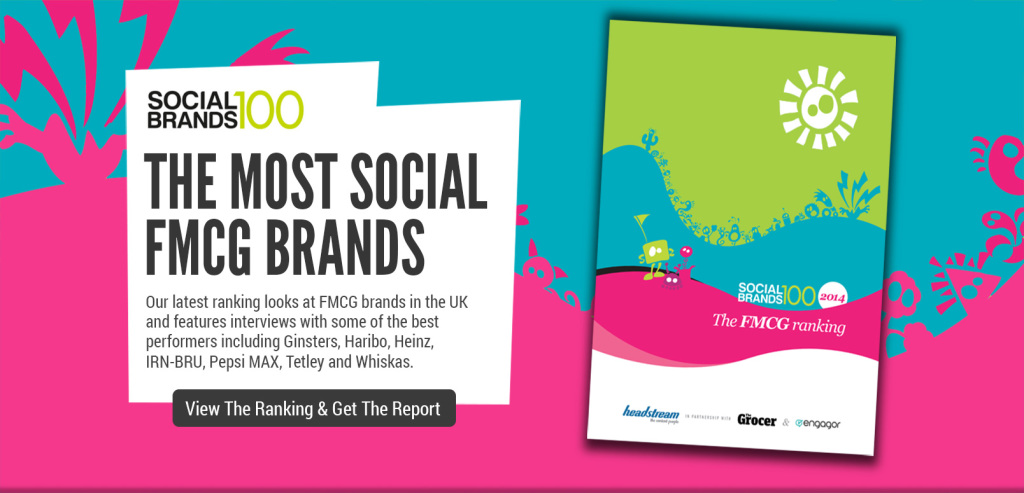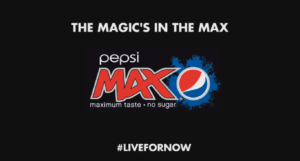 A new study revealed how the UK’s 100 biggest FMCG brands rank on social media – identifying that competitor brands are outshining top selling brands, by shifting the focus from sponsored pages and like ads, to promoting and boosting individual pieces of content.
A new study revealed how the UK’s 100 biggest FMCG brands rank on social media – identifying that competitor brands are outshining top selling brands, by shifting the focus from sponsored pages and like ads, to promoting and boosting individual pieces of content.
The research found that only one brand (Pepsi MAX) is a top ten bestseller and also in the top ten for social engagement – and in fact, half of the top ten brands for social engagement are actually ranked in the bottom 25 percent of the bestsellers list. Indicating that challenger brands are working harder to try and unseat the leading lights. The research also found that market-leading brands with very high numbers of fans/followers have to work proportionally harder to engage them at the same rate.
Further analysis also found that real-time marketing is embedded into the social strategy of top brands. Indeed, most have defined budgets allocated for using paid social media, to allow the brand to act agile, and push popular content further or respond to topical events in the news.
Social Brands 100 The FMCG Ranking was created by content marketing specialist Headstream. It analysed the UK’s 100 biggest-selling grocery brands (as defined by market analysts IRI) by examining their engagement levels on key social media platforms Facebook (Likes, Comments, Shares, Wall Posts and Fans) and Twitter (Tweets, Retweets, Replies and Followers).
 The top ten FMCG brands for social engagement were:
The top ten FMCG brands for social engagement were:
- IRN-BRU
- Volvic
- HARIBO
- Whiskas
- Pepsi MAX
- Chicago Town
- Heinz Soup
- Ginsters
- Tetley
- Capri Sun
Steve Sponder, Managing Director at Headstream, comments: “Facebook and Twitter continues to evolve, and the brands scoring highly this year are the ones that appreciate both the strengths and weaknesses of each platform, and have adapted their use accordingly.
“We found that successful brands on social are the ones that place a greater focus on quality, relevant content that adds value. They are also intent on growing community size organically, ensuring their following is of true fans that are more likely to share branded content. This is something that bigger, top-selling brands have been slow to react to, and they need to follow suit to regain lost ground.”
Ian McCarthy, marketing controller at Heinz which features as a case study in the report agrees, summarising the success of Heinz in a four-fold mantra: “Be authentic, add value to consumer lives, tell a story and listen as well as talk”
The research also found that more than half (53 percent) of brand Facebook pages, and six of the top ten brands included in the ranking, have less than 250,000 followers. The average page engagement rates tend to decrease as the community size (total page likes) increases.
On Twitter, meanwhile, engagement rates and community sizes for FMCG brands were smaller: only four percent exceed 200,000 followers and three-quarters (73 percent) have feeds with less than 20,000 followers.
 However, the data suggests that engagement rates on Twitter do not tend to decrease as the total number of followers increases, as they do on Facebook. But once a community surpasses 5,000 followers, engagement rates drop considerably.
However, the data suggests that engagement rates on Twitter do not tend to decrease as the total number of followers increases, as they do on Facebook. But once a community surpasses 5,000 followers, engagement rates drop considerably.
Adrian Troy, head of marketing at top-ranked social FMCG brand IRN-BRU, notes: “Digital plays a key role in everything we do and social is a huge part of that. We use social to connect and engage with our community and to express the personality of the brand.”
The brand’s objective is to create content so good that it has to be shared; setting out to be both bold and different in all of its branded communications. This is a conscious decision made by IRN-BRU, determined to never jump on the bandwagon and instead to differentiate itself from the rest of the pack.

You must be logged in to post a comment Login